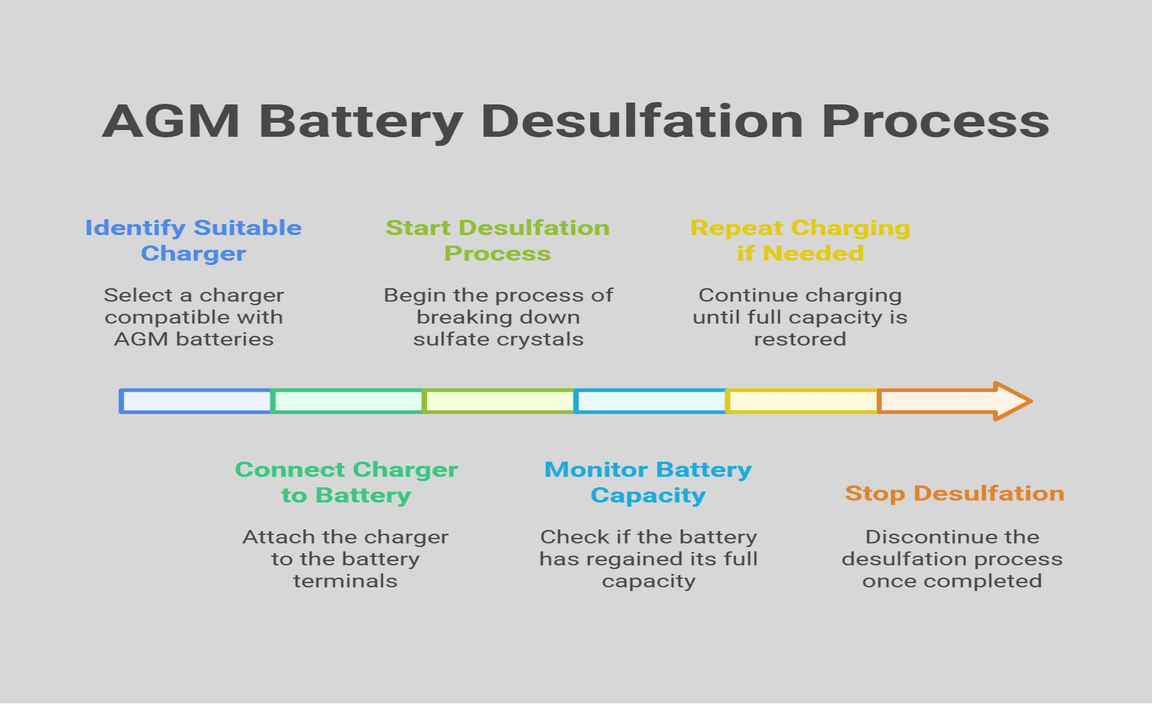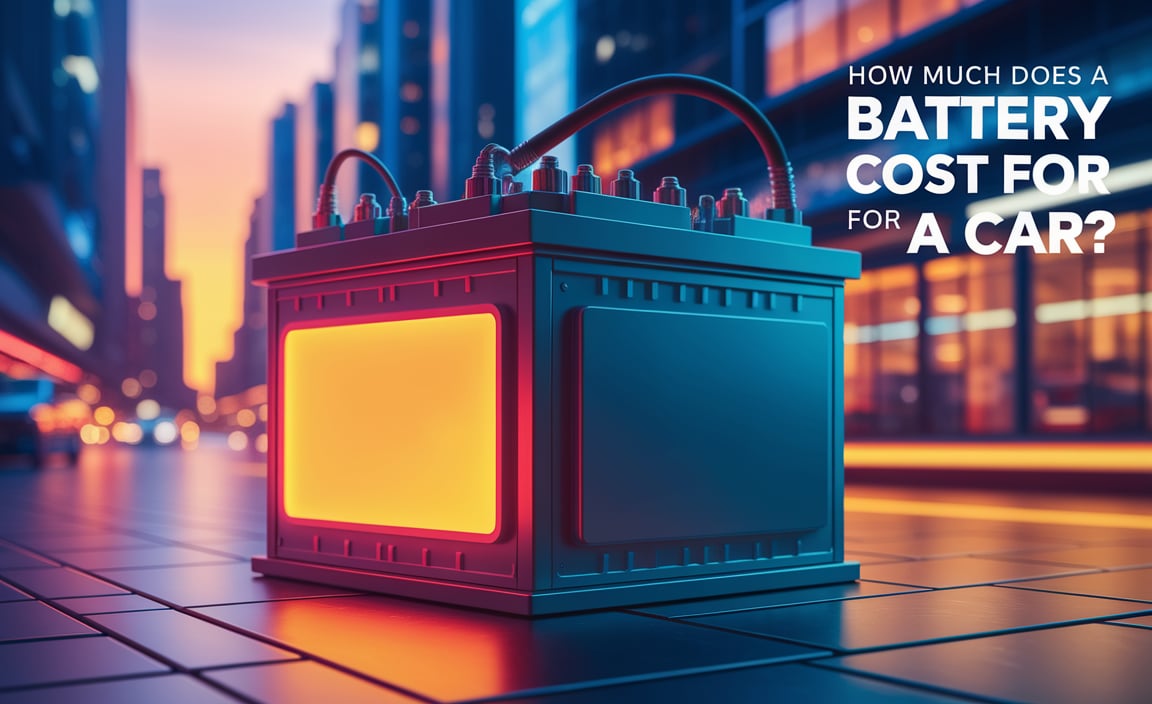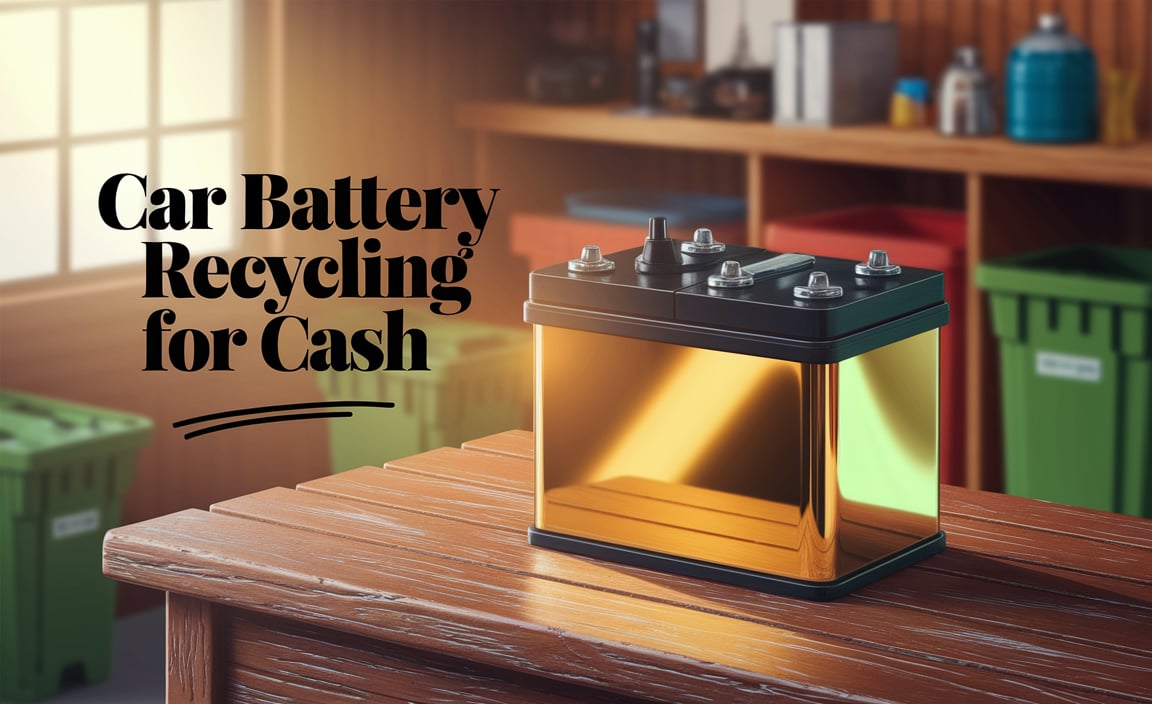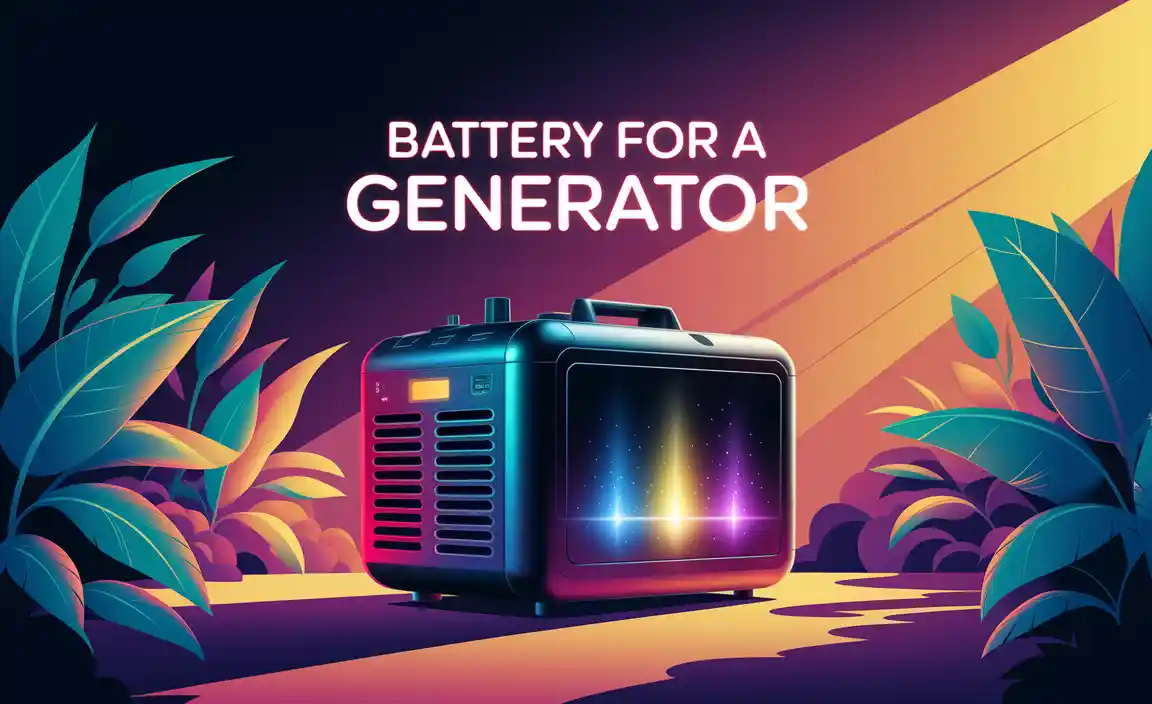Your AGM battery has been providing you with satisfactory service for some time and then suddenly you notice that it is losing performance. Various reasons can lead to this issue, but desulfation is most likely to be the culprit here. When your AGM battery starts exhibiting this issue, the quality does not improve but rather declines.
If so, you need to know how to desulfate AGM batteries to get them to work again. In this article, we explain all the crucial facts about AGM battery desulfation.
Basics Of An AGM Battery
Before going deep into the desulfation, you should know about the basics of the AGM battery first. AGM stands for Absorbent Glass Mat, which is a lead-acid rechargeable battery. Unlike the flooded batteries, the AGM battery comes with a sealed and valve-regulated structure.
The uniqueness of an AGM battery is its fiberglass mats. Reasonably, the glass mats are located near the lead plates inside the battery. For this reason, the electrolyte of the AGM battery is mainly available in a thick liquid form. In any case, there is less chance of creating any risk by using this battery.
Sulfation And Desulfation In An AGM Battery
Sulfation is an obvious thing for every lead-acid battery when the entire life cycle is considered. Undoubtedly, there is no way you can entirely avoid it. So, you should consider it as a normal process. However, the AGM battery is less prone to sulfation because of the sealed feature when compared to the flooded lead-acid batteries.
Though the AGM battery is comparatively less prone to sulfation, charging it less frequently can cause fast sulfation. Basically, the sulfation happens due to the aging of the battery since the lead sulfate crystals start to spread near the lead plates. Besides, discharging the battery partially also allows some crystals to remain near the plates. In this way, the AGM battery grows sulfation inside.
On the contrary to that condition, desulfation means ending the sulfation of the AGM battery. If you can remove the remaining lead sulfate crystals and bring balance to the chemical reactions, the desulfation process is completed.
Identification Of Sulfation In An AGM Battery
Checking the battery is the most important step before starting the desulfation process. Otherwise, your assumptions could be wrong. As a first step, check if the battery is providing enough current. When the current supply falls below the average limit, there is a risk of sulfation.
As you cannot open a sealed AGM battery, you won’t be able to open it to check for sulfation. Besides, the sealed battery doesn’t allow a hydrometer, and of course, you are obliged to use a voltmeter. And, you need to use a digital version of this tool to test the battery volt properly.
After measuring the battery voltage, you can simply identify if the battery doesn’t have good efficiency. To do this, charge the AGM battery fully using a compatible charger. And then, keep the battery resting overnight. This process will help you to get the exact result. So, in the end, measure the voltage of the AGM battery using the voltmeter and make sure the battery doesn’t have any load on it.
Now, you need to compare the tested result to match the sulfation range. If you find that the voltage is more than 12.4V, the sulfation is not severe, and you can recover the battery by taking proper care. But, when the voltage is lower than 12.4V, the battery has such heavy sulfation that you won’t be able to recover it.
Desulfation Process Of AGM Battery
Desulfating an AGM battery always requires a desulfator or charger. So, the best way of desulfating an AGM battery is to use a suitable battery charger or a compatible desulfator. A regular charger can be used, but we do not recommend it due to the risk of damaging the battery.
One thing to remember, the AGM battery is very sensitive to overcharging and requires slow charging. Therefore, only a compatible charger or desulfator can avoid these issues. If you show the model or specifications of your AGM battery in the shop, they will give you a matched one.
- Firstly, after arranging the suitable charger or the compatible sulfator, you need to connect it with the AGM battery. Make sure to ask the shopkeeper if the desulfator is AGM battery supported.
- Now, attach the desulfator to the power supply, or use the charger to start charging as well as the desulfation process. Instantly, the desulfator will start breaking down the lead sulfate crystals.
- After performing a full charge, check if the battery is working with the total capacity now. If not, then you need to repeat the recharge process until you get back to the peak voltage.
- Finally, when the desulfation is fully completed, stop using the desulfator or that specific battery charger. And, you can use your AGM battery like before again.

Final Verdict
AGM batteries have a sealed compartment, which makes the desulfation process different from other types. In order to determine whether there is sulfation, you need to check the voltage first. As long as you know it is possible to run a desulfation process, you can use any de-sulfator or charger compatible with AGM batteries. Be careful not to overcharge the battery when desulfating.
Resource:
- Battery desulfation explained in depth: https://batteryuniversity.com/article/bu-804b-sulfation-and-how-to-prevent-it
- How lead-acid batteries work: https://www.explainthatstuff.com/how-lead-acid-batteries-work.html
- Types of battery chargers and their functions: https://www.energy.gov/eere/vehicles/articles/ev-everywhere-charging-101
- Best practices for maintaining AGM batteries: https://www.optimabatteries.com/experience/blog/agm-battery-maintenance-tips








